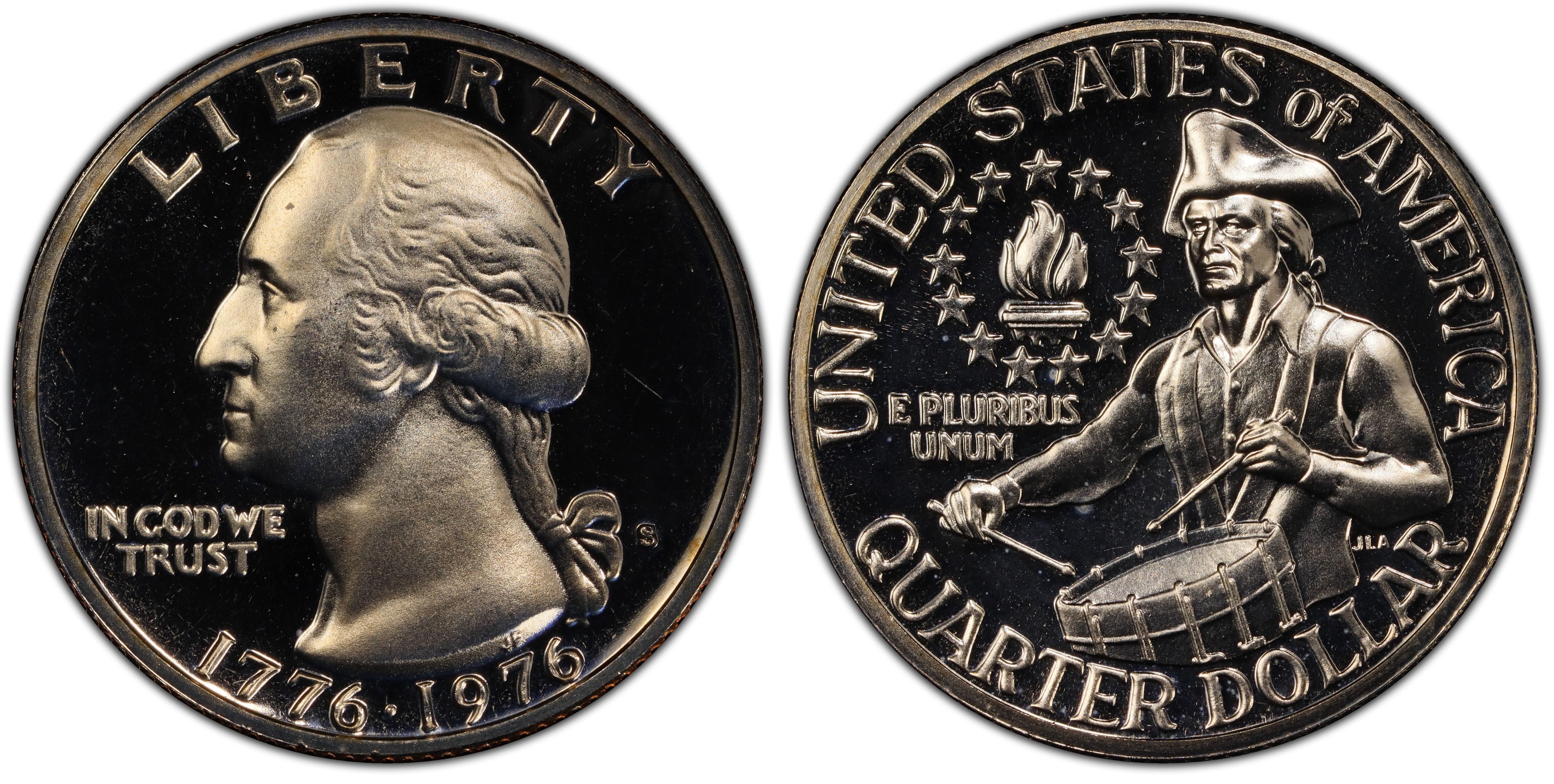The term “Bicentennial Quarter” refers to the distinct quarter that was coined in the United States in 1976 to mark the two hundredth anniversary of the independence of the United States.
However, there are a few rare instances that can bring substantial amounts, particularly if they are in exceptional condition or feature distinctive errors.
Although the majority of Bicentennial quarters are not worth much more than their face value (25 cents), there are a few examples that can fetch significant amounts.
Consider the following three instances of rare Bicentennial quarters, each of which has the potential to fetch up to $5 million:
1. 1976-D Double Die Obverse Quarter

On this particular coin, there is a double die error, which results in the image of George Washington appearing to be twice as large. Particularly visible is the typo in the date, as well as the term “LIBERTY.”
There is a possibility that a well-preserved version of this mistake coin may fetch a price of up to $5 million, depending on the circumstance in which it was discovered. On the other hand, this coin is incredibly uncommon, and there are just a handful of copies that are known to exist.
2. 1976-S Proof Quarter with Deep Cameo

Proof quarters were coined in 1976 and have a bright, mirror-like finish. These quarters were manufactured with great attention for collectors and have a reflective quality.
A deep cameo variant of this coin is particularly valuable since it has a striking contrast between the frosted picture and the backdrop that is similar to a mirror.
There have been instances where similar items have been sold for tens of thousands of dollars, with the rarest examples fetching much higher prices.
ALSO SEE : Rare Bicentennial Quarter Valued at $19 Million Still in Circulation
3. 1976 Bicentennial Quarter with Inverted Mint Mark

This rare error occurs when the mint mark (the “D” for Denver or “S” for San Francisco) is stamped upside down.
The inverted mint mark is incredibly hard to find, but it is highly sought after by collectors. A well-preserved example of this error can be worth millions, though they are extremely rare.
These rare coins are typically only found through dedicated searching and are highly prized by numismatists and collectors.
If you have a Bicentennial quarter that you suspect could be valuable, it’s always a good idea to have it professionally graded by a reputable service to determine its true worth.
| Coin Type | Error/Feature | Potential Value | Rarity |
|---|---|---|---|
| 1976-D Double Die Obverse Quarter | Double die error on the obverse (doubled image of George Washington) | Up to $5 million (depending on condition) | Extremely rare |
| 1976-S Proof Quarter with Deep Cameo | High contrast between frosted image and mirror-like background | Tens of thousands of dollars to higher amounts | Rare, high demand |
| 1976 Bicentennial Quarter with Inverted Mint Mark | Inverted mint mark (“D” or “S” upside down) | Millions for well-preserved examples | Extremely rare |
How can I tell if my Bicentennial quarter is worth more than face value?
Look for errors such as double die obverses, inverted mint marks, or unique proof finishes. If you think your coin is rare, have it professionally graded by a reputable service like the Numismatic Guaranty Corporation (NGC) or Professional Coin Grading Service (PCGS).
What is the best way to identify a double die error on a 1976-D quarter?
The double die error causes the images (such as “LIBERTY” and the date) to appear doubled. This is most visible when closely examining the details with a magnifying glass.
What makes a 1976-S Proof quarter with Deep Cameo special?
The deep cameo version has a highly distinct frosted image of George Washington with a shiny, mirror-like background. This creates a stark contrast and increases the coin’s appeal to collectors.















